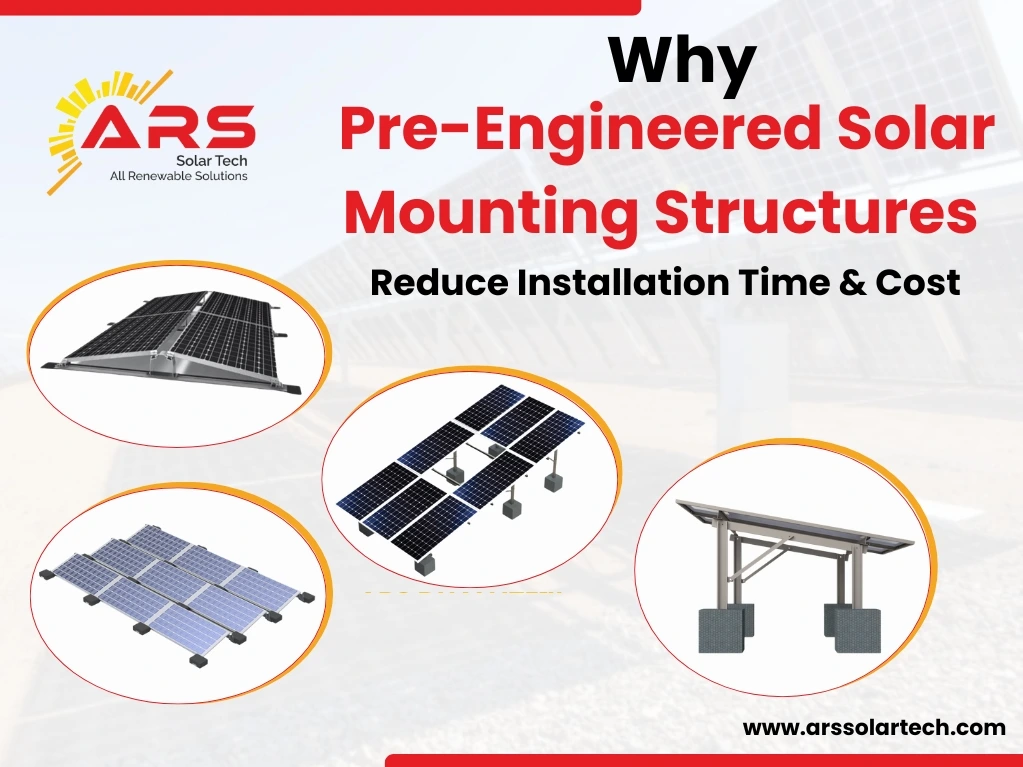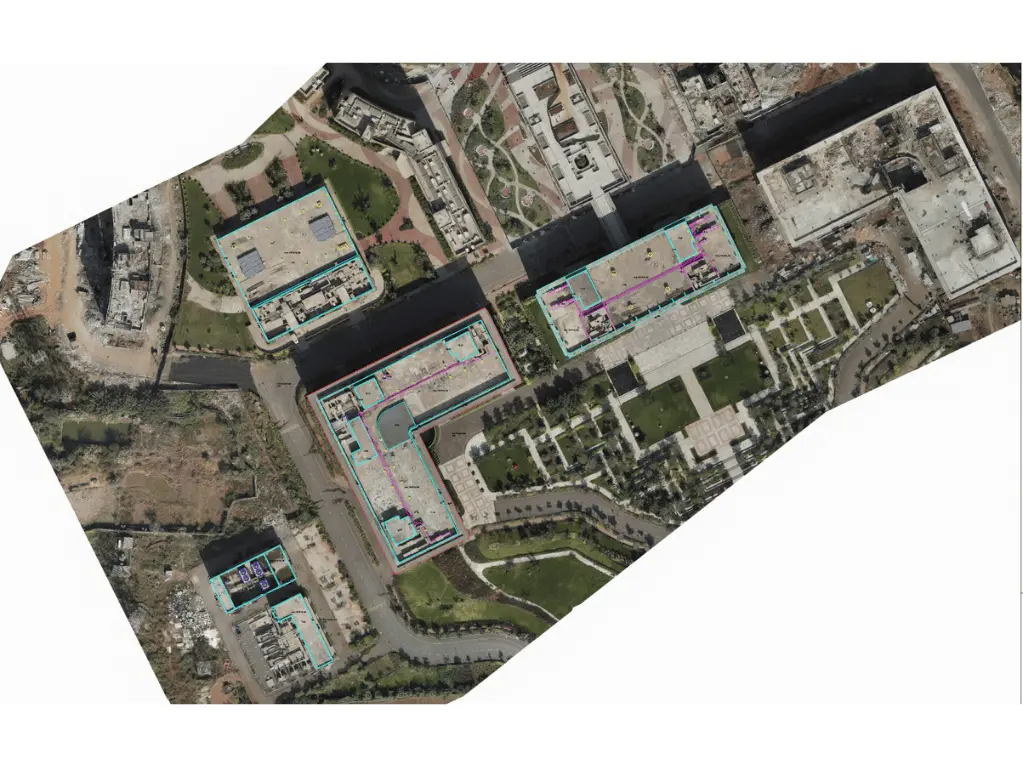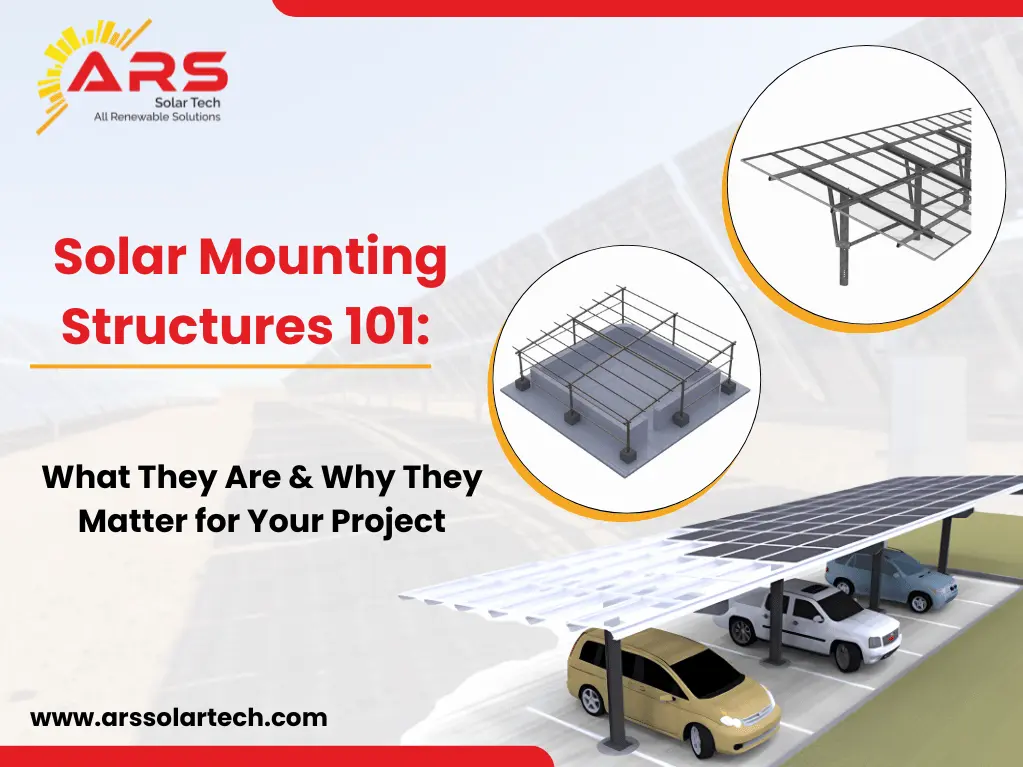
In-Depth Guide to Designing Solar Mounting Structures
solar panel mounting structures form the backbone of solar power plants. The design and engineering of these structures are not just about holding the solar panels; they involve intricate calculations, material selection, and adherence to engineering standards to ensure the plant operates efficiently and safely over its lifecycle.
This blog dives into the technical aspects of designing solar system ground mount and highlights their critical importance in solar power plants.
1. Structural Analysis and Design Considerations
1.1 Wind Load and Static Load Analysis
Solar mounting structures must withstand environmental loads such as wind, snow, and seismic forces. Wind load is a critical factor, as high winds can cause structural failures.
- Design Standard: IS 875 (Part 3) or IEC 61215 for wind load calculations.
- Common Assumptions:
- Wind speed: Design for up to 180 KMPH (site-specific).
- Panel inclination: Typical range of 10°–30°.
- Staad.Pro Analysis: Software like STAAD is used for finite element analysis, ensuring the structure is safe under maximum loading conditions.
1.2 Dead Load Calculations
- Solar panels, cables, and mounting components contribute to the dead load.
- Formula: Total Dead Load = Weight of Panels+Weight of Frame Components\text{Weight of Panels} + \text{Weight of Frame Components}
- Example: A 500 W module weighing 25 kg translates to ~12.5 kg/m² for the array.
1.3 Live Load Considerations
- Maintenance loads (e.g., technicians walking on the structure) are factored in.
- Standard: IS 875 (Part 2).
2. Material Selection
2.1 Structural Members
- Steel: Hot-Dip Galvanized (HDG) steel is the most common choice for corrosion resistance.
- Coating: Minimum 120-micron zinc coating as per ASTM A123 or IS 4759.
- Aluminum: Lightweight and corrosion-resistant, preferred for coastal areas.
2.2 Fasteners and Anchors
- Bolts and Screws: Stainless steel or galvanized for durability.
- Chemical Anchors: Epoxy-based anchors provide robust grouting in concrete foundations.
2.3 Surface Coatings
- HDG prevents rust and ensures long-term structural integrity.
- Galvalume: Used for superior corrosion resistance, especially in humid or saline environments.
3. Types of Solar Mounting Structures
3.1 Fixed-Tilt Structures
- Cost-effective and simple.
- Optimal for areas with consistent solar irradiance.
- Requires precise tilt angle based on latitude for maximum efficiency.
3.2 Seasonal Tilt Structures
- Adjustable to optimize performance during different seasons.
- Slightly higher initial cost but improves annual energy yield.
3.3 Tracking Systems
- Single Axis: Tracks the sun along one axis, increasing energy yield by ~15–25%.
- Dual Axis: Tracks the sun along two axes, enhancing yield by up to ~40%.
- Requires robust design to manage dynamic loads.
4. Foundations and Anchoring
4.1 Foundation Types
- Concrete Footings: Most common for stability and durability.
- Ramming Foundations: Steel poles directly rammed into the ground for quick installation.
- Ballasted Foundations: Used for flat or non-drillable roofs.
4.2 Grouting with Chemical Anchors
Chemical grouting enhances the bond between anchor bolts and concrete, ensuring stability in high-stress conditions.
- Standard: Use products complying with ASTM C881.
5. Key Technical Parameters in Solar Structure Design
Parameter Typical Value / Standard Importance Wind Load Up to 180 KMPH (site-specific) Prevents structural failure. Snow Load Site-specific (e.g., 1 kN/m²) Avoids collapse in snow-prone areas. Material Yield Strength 235 MPa (steel), 310 MPa (aluminum) Ensures load-bearing capacity. Coating Thickness 120–150 microns (HDG) Corrosion resistance. Inclination Angle 10°–30° Maximizes energy generation.
6. Effects of Poorly Designed Solar Structures
6.1 Reduced Efficiency
Misalignment or unstable mounting leads to suboptimal sunlight capture, reducing energy output.
6.2 Increased Maintenance Costs
Poor material quality or structural failures lead to frequent repairs and replacements.
6.3 Safety Hazards
Collapsing structures can damage solar panels and pose risks to personnel and property.
7. Benefits of Well-Designed Solar Structures
- Efficiency: Optimal tilt and stability ensure maximum energy generation.
- Longevity: Durable materials and coatings ensure 25+ years of performance.
- Cost Savings: Reduces maintenance and replacement costs.
- Safety: Provides robust support, even under extreme conditions.
Conclusion
Designing solar mounting structures is a highly technical process that ensures the safety, efficiency, and longevity of solar power plants. At ARS Solartech, we specialize in crafting custom solar structures tailored to specific site conditions. From robust material selection to precision engineering, our structures are built to last.
Choose ARS Solartech for reliable solar structures that power your future.







